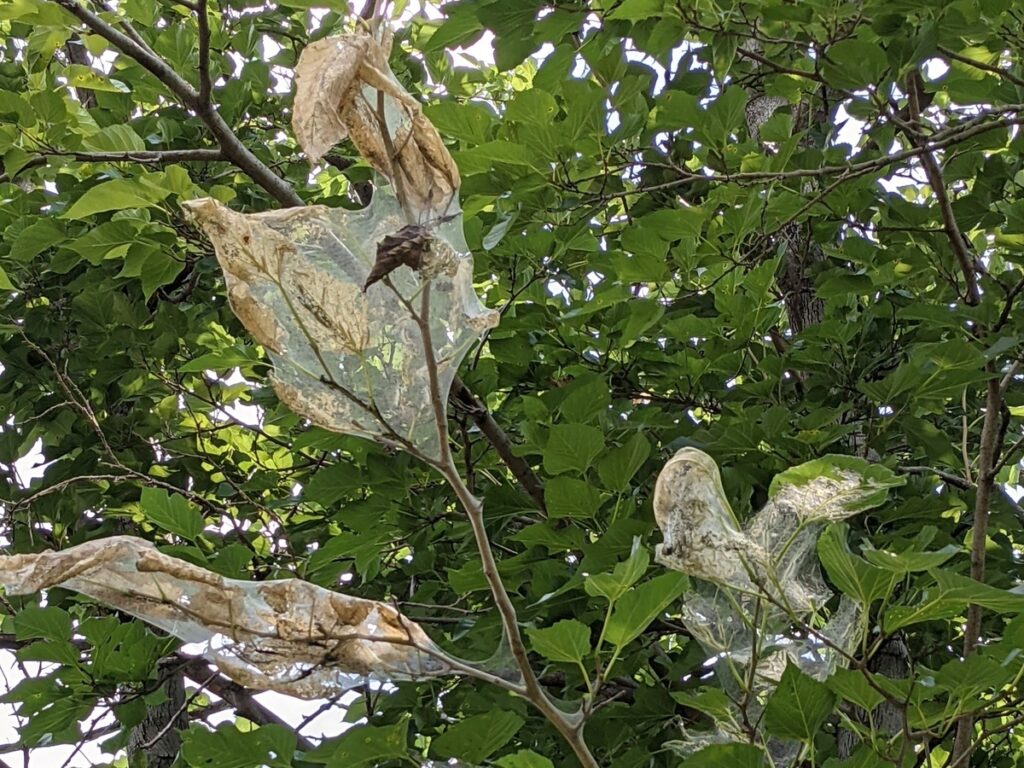The fall webworm is a common pest of shade and ornamental trees in Texas. They cover leaves, branches, and trees in a silken web.
They are native to North America and found in the U.S. and southern Canada. Fall webworm can be found in more than 100 species of broadleaf trees including pecan, persimmon, black walnut, sweetgum, elms, hickory, maple, and cherry.
The insect mainly affects the appearance of trees and is more a nuisance than a threat to the tree’s health.
Life cycle
Eggs are small, yellow or light green, and turn gray before hatching. They hatch about two weeks after they are laid, and the young larvae immediately spin a silken web over the foliage on which they feed.
As they grow, they enlarge the web to cover more and more foliage. On large trees, complete branches may be covered, while on smaller trees, the entire plant may be encased in webbing.
Young larvae skeletonize the upper leaf surface while older larvae devour the entire leaf except for the large veins and midrib. Larvae usually develop in 4-8 weeks. As they approach maturity, the larvae leave the webs and wander and feed as they search for suitable pupation sites. Pupation generally occurs in thin silken cocoons spun in the leaf litter or just beneath the surface of the soil.
Adult moths of the first generation usually appear by May in Texas. They have a wingspread of about 1 1/2 inch (30-42mm) and are white in color with dark spots on the wings. The coloration of the adults, as well as the larvae, can be quite variable.
Shortly after emerging, moths mate and the female lays several hundred eggs in a mass on the underside of leaves. She covers them with hairlike scales from her body so they appear as a white, cottony patch on the leaf. There may be as many as four generations per year in southern parts of the state.
Since both fall webworms and tent caterpillars construct webs in the crowns of their hosts, it is important to distinguish between the two. Fall webworm webs are flimsier and enclose the ends of the leaves of individual branches. Tent caterpillar webs confine their web to limb crotches and flat mats along branches, and they are only found early in the spring, compared to summer and fall for the fall webworm.
Control
Fall webworms have many natural enemies. More than 50 species of parasites and 30 species of predators are known in America. These beneficial insects along with disease, starvation, and unfavorable weather conditions usually keep fall webworm populations at tolerable levels.
If direct control becomes necessary, nests of the webworm can be removed from high value trees and destroyed. Hand picking larvae or destroying their tents can significantly reduce a local population.
Several insecticides are registered for chemical control of this insect. All chemicals must be currently registered and labeled for use by the US Environmental Protection Agency and the Texas Department of Agriculture. Before using any pesticide, read and carefully follow all application directions, cautionary statements and other information appearing on the label.
